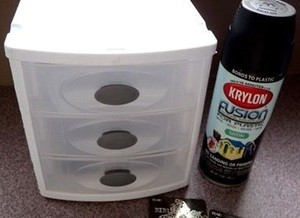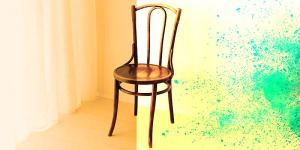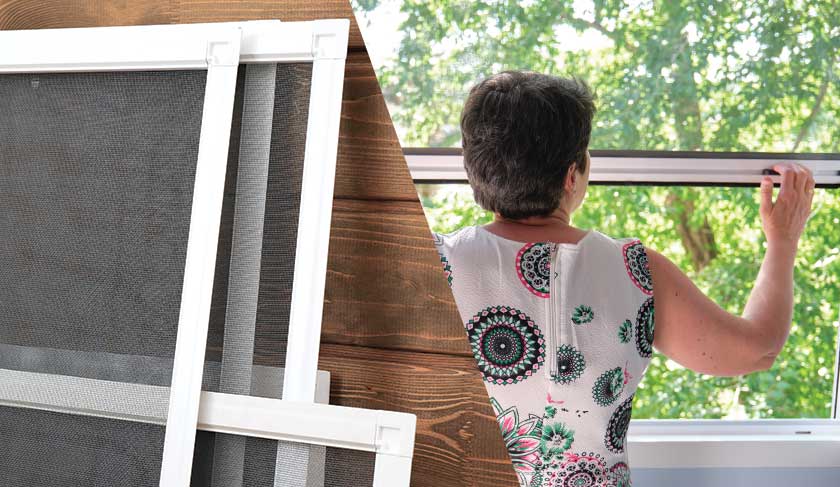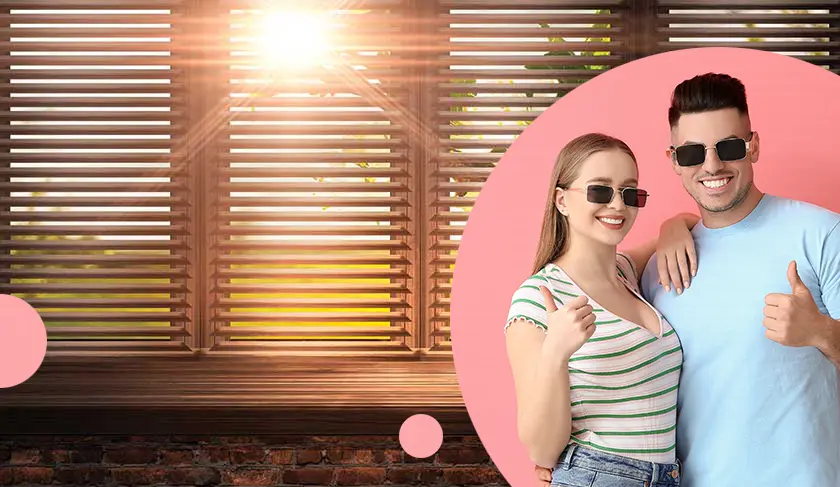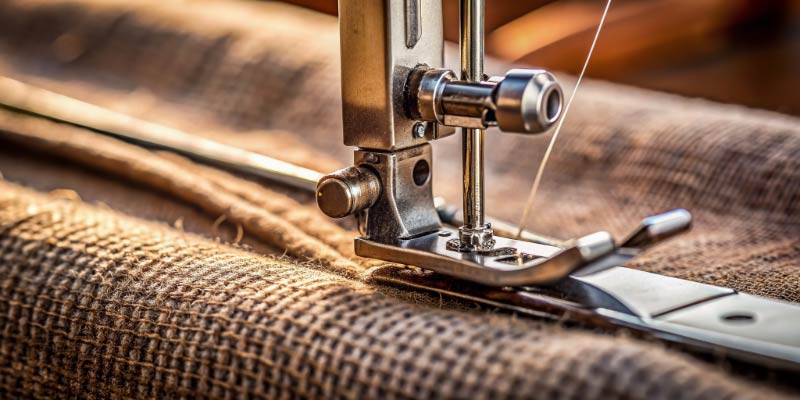
Looking for the best sewing machine for upholstery projects? Find the perfect machine for heavy fabrics & thick seams, and master upholstery sewing like a pro.
Just about every household has a sewing machine these days, but not all sewing machines are perfect for every type of sewing project. When it comes to a reupholstering project, most household sewing machines simply don’t have the strength and durability to produce professional-grade results. In order to help you find the best sewing machine for upholstery projects, let’s take a look at some of the most important features.
Sewing for Sofas: Choosing the Best Sewing Machine for Upholstery
One of the first projects that most people think of is to replace their sofa chairs. Reviving old furniture and creating new pieces from scratch is a great way of redesigning any space. However, you will quickly realize that your standard household sewing machines just simply aren’t up to the task. When working with upholstery, the fabrics are thicker and involve many layers that require heavier-duty stitching. Your standard household sewing machine simply cannot provide you with the results you’re looking for.
Sure, while a standard household sewing machine may be great for clothing, quilts, or curtains, they are not good for most upholstery projects. The force that is needed to push the needle through the layers of fabric and padding is quite significant. This is why most upholstery shops use the best sewing machine for upholstery. They offer the power, durability, and versatility that is needed to obtain a high-quality look.
Material Matters: The Importance of Fabric Thickness in Upholstery
Your average piece of upholstery will see far more wear and tear than any simple pair of pants. The heavier canvas, vinyl, twill, or leather materials, are specifically designed to resist the stress of everyday use. You need a machine that is specifically designed to push the needle through these thicker and tougher materials.
Moreover, many of the materials that you will be working with on an upholstery project, are less flexible and harder. You can easily fold a piece of cotton cloth back and forth in order to push the needle through multiple layers at a time, but you can’t do that with leather. And, if you ever tried to stitch leather with a traditional household needle, you will find that it quickly bends under the pressure. When choosing the best sewing machine for upholstery projects, you need to take into consideration the thickness and flexibility of the materials you will be working with.

Tips for Handling Thicker Upholstery Fabrics
Before moving on to the key features to look for and the advantages of using an industrial-grade sewing machine, let’s talk about some simple tips for handling thicker upholstery materials.
Needle Choice
Without question, it’s important to always use upholstery needles. They are thicker and sturdier than regular sewing needles. In fact, regular sewing needles can easily break under the pressure when pushed through heavier materials like leather.
Thread Selection
The thread that is used in upholstery is also stronger and thicker. When working with upholstery projects, you will want to work with heavy-duty nylon or polyester thread, as these are designed to withstand the stress of frequent heavy loads.
Presser Foot Adjustment
More importantly, you will want to have a machine that allows you to raise the presser foot higher than usual. After all, you are generally working with thicker fabrics and multiple layers at a time. Having extra clearance will help you to fit bulkier fabric layers underneath it without causing any jams.
Strength & Stability: The Need for a Sturdy Machine
The strength and stability of a sewing machine can make or break an upholstery project. General household sewing machines are lightweight, they are designed to work with smaller and more delicate fabrics. But when you are reupholstering furniture, you have to maneuver larger and heavier pieces of fabric. The sewing machine that you use for upholstery must have a powerful motor, a sturdy frame, and a very stable base.
Key Features to Look for in an Upholstery Sewing Machine
In choosing a strong upholstery machine, it’s important to select one that has a powerful motor, a metal frame, and a large workspace.
Powerful Motor
Unlike traditional household sewing machines, the best sewing machine for upholstery has a more powerful motor. They are capable of providing more torque and speed which is necessary to punch through the thicker layers of fabric without any issues. For upholstery projects you’ll want something with 100-150 watts, to ensure it delivers the power you need.
Metal Frame Construction
Many household sewing machines are also composed mostly of plastic. Under the strain of pushing a needle through layers of leather, the plastic can easily bend and break. This is why you want a machine that uses metal components, especially in the internal mechanisms.
Large Workspace
Above all, you also need a larger workspace, because upholstery uses larger pieces of material. You will need ample room to maneuver the pieces around and to ensure that the stitches are straight and consistent.
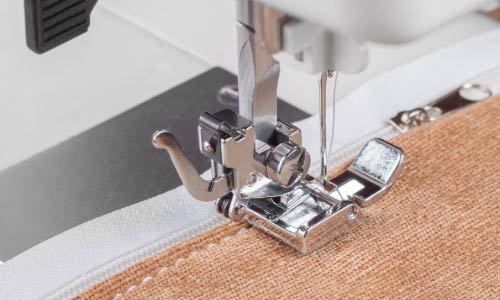
Why Industrial Sewing Machines Are the Best Sewing Machine for Upholstery
While it’s still possible to tackle some upholstery projects using a household sewing machine, if you’re ready to take your work to the next level then it’s time to consider purchasing an industrial sewing machine. These heavy-grade sewing machines are perfect for working with heavier upholstery, canvas, and leather.
Power and Durability
For starters, industrial-grade sewing machines are specifically built to handle continuous high-speed sewing for long periods of time. Their motors tend to be more powerful than those that are found in most household units, which allows them to sew through thicker materials without any effort. Moreover, they are specifically designed for production environments, which means they can run all day long without overheating.
Built to Last
Industrial-grade sewing machines are also designed to last. When designing a household sewing machine, the manufacturers don’t expect you to use the sewing machine 24 hours a day 7 days a week. But industrial-grade sewing machines are developed to run at this pace for months on end. Simply put they are designed to last for decades with proper care.
Speed and Precision
Another big advantage of industrial-grade sewing machines is their speed. Because they are designed to be used in a production setting, most of them are capable of reaching thousands of stitches per minute. Faster stitching means improved precision, and the ability to tackle complex stitching patterns and a quick and efficient manner.
Common Types of Industrial Sewing Machines for Upholstery
Let’s take a look at 3 of the most common types of industrial sewing machines for upholstery.
Walking Foot Machines
The most common type of sewing machine for upholstery projects is the walking foot machine. They are known for their ability to handle thicker layers of fabric, thanks to the mechanism that helps to move both the needle and the presser simultaneously.
Compound Feed Machines
Another popular type of industrial-grade sewing machine is the compound feed machine. These specific devices feature a walking foot and a needle feed. This allows you to have excellent control over multiple layers of fabric at the same time.
Cylinder Arm Machines
Lastly, you have the cylinder arm machines. These are perfect for sewing in tight spaces and around curves. The cylinder arm machines are typically smaller and make use of a tubular sewing bed that gives you more flexibility when working with bulky or odd-shaped materials.
Beyond Basic Stitches: Must-Have Features in the Best Sewing Machine for Upholstery Projects
Let’s face it, upholstery projects will often require more than just straight stitches. You will find yourself needing specialized features and accessories that can help make the process more efficient.
Walking Foot
In the upholstery industry, the walking foot is a game changer. The walking foot is an attachment that helps to feed multiple layers of fabric through the machine evenly. It is designed to prevent slipping or bunching, especially when dealing with slippery or heavier fabrics like vinyl and leather.
Adjustable Presser Foot Pressure
While most household sewing machines may feature some formal walking foot, they don’t provide the ability to adjust the pressure of the presser. Industrial-grade sewing machines allow you to adjust the pressure for the various materials you may be working with. This is especially important when dealing with fabrics like leather and vinyl that can easily stick if there’s too much pressure.
Reverse Stitching
In order to create strong seams, you may need to backstitch on a regular basis. Reverse stitching will allow you to reinforce your seams at the very beginning and end of every stitch. This will prevent unraveling over time.
Large Bobbin Capacity
Because large upholstery projects consume a lot of thread, it’s important to have a larger bobbin capacity. Most smaller household machines simply do not provide enough thread in the bobbin to complete the project without having to stop constantly to replace it.
Speed Control
Regardless of whether you are sewing upholstery-grade materials or delicate fabrics, having control over the speed is crucial for creating amazing end results. Make sure that you select a machine that gives you complete control over the speed settings, so that you can slow it down for more precision tasks, and speeded up for straight seams.

Best Sewing Machine for Upholstery Work – Top 3 Options
Taking into consideration the points in this article, here are our three favorite heavy-duty sewing machines for upholstery projects. Ultimately the best one for you will depend on the frequency of use, your budget and your table/floor space.
Singer Heavy Duty 4452
The Singer Heavy-Duty 4452 is a great entry-level machine that is capable of handling very thick fabrics and upholstery materials. Singer is known for manufacturing high-quality sewing machines, and this one will provide you with all of the strength and durability you need for general household projects.
Juki DDL-8700
If you’re looking for the best sewing machine for upholstery that is both powerful and reliable, then look no further than the Juki DDL-8700. This machine is perfect for just about any upholstery project regardless of size and material.
Consew 206RB-5
When it comes to a quality walking foot machine, that is capable of taking on thick fabrics and leather, then why not take a look at the Consew 206RB-5. This industrial-grade sewing machine is extremely durable and provides you with smooth feeding of a wide array of materials.
Finding Your Perfect Match: Choosing the Best Sewing Machine for Upholstery
Now let’s take a look at choosing the right upholstery sewing machine for your particular project.
What types of projects will you be working on?
If you’re only sewing cushions and handling simple reupholstering jobs around the household, then a high-quality heavy-duty domestic machine might be all that you need. However, if you plan on working with any form of leather or vinyl, or if you plan to do so professionally in the future, then why not invest in an industrial-grade machine at the very beginning?
What is your budget?
Of course, your budget is also very important when it comes to selecting the best sewing machine for upholstery projects. If you are just a hobbyist, and take on the occasional project, then a durable home model might be all that you need. However, if you are looking to start your own business then you might want to invest the extra money to purchase an industrial machine.
How much space do you have?
Keep in mind that domestic models generally don’t need a large workspace. Industrial sewing machines, on the other hand, are larger and heavier and require significantly more space. If your space is limited, then try to find a compact heavy-duty household unit instead.
Conclusion
Upholstery work is a very demanding hobby that requires the best sewing machine for upholstery projects. As a result, you don’t want a simple domestic machine because it’s not capable of handling the thickness and offering the same level of precision that an industrial machine can handle. While industrial machines do offer the highest level of power and durability, some heavy-duty domestic models can perform very well under certain conditions. In the end, choosing the best sewing machine for upholstery means choosing one that meets the needs of your specific projects, and allows you to work efficiently and confidently.
Author
-

Hey, I’m Sara, co-owner of NestKoo! I’m a graphic designer and professionally trained fine artist, with a Bachelor of Arts (Fine Art) majoring in Painting. I love being close to nature, sustainable living and bringing new life to old things. My specialty in NestKoo is DIY house painting, upholstery and furniture upcycling, where I bring my skills in fine art painting and contemporary design together into a practical home DIY context.
View all posts




